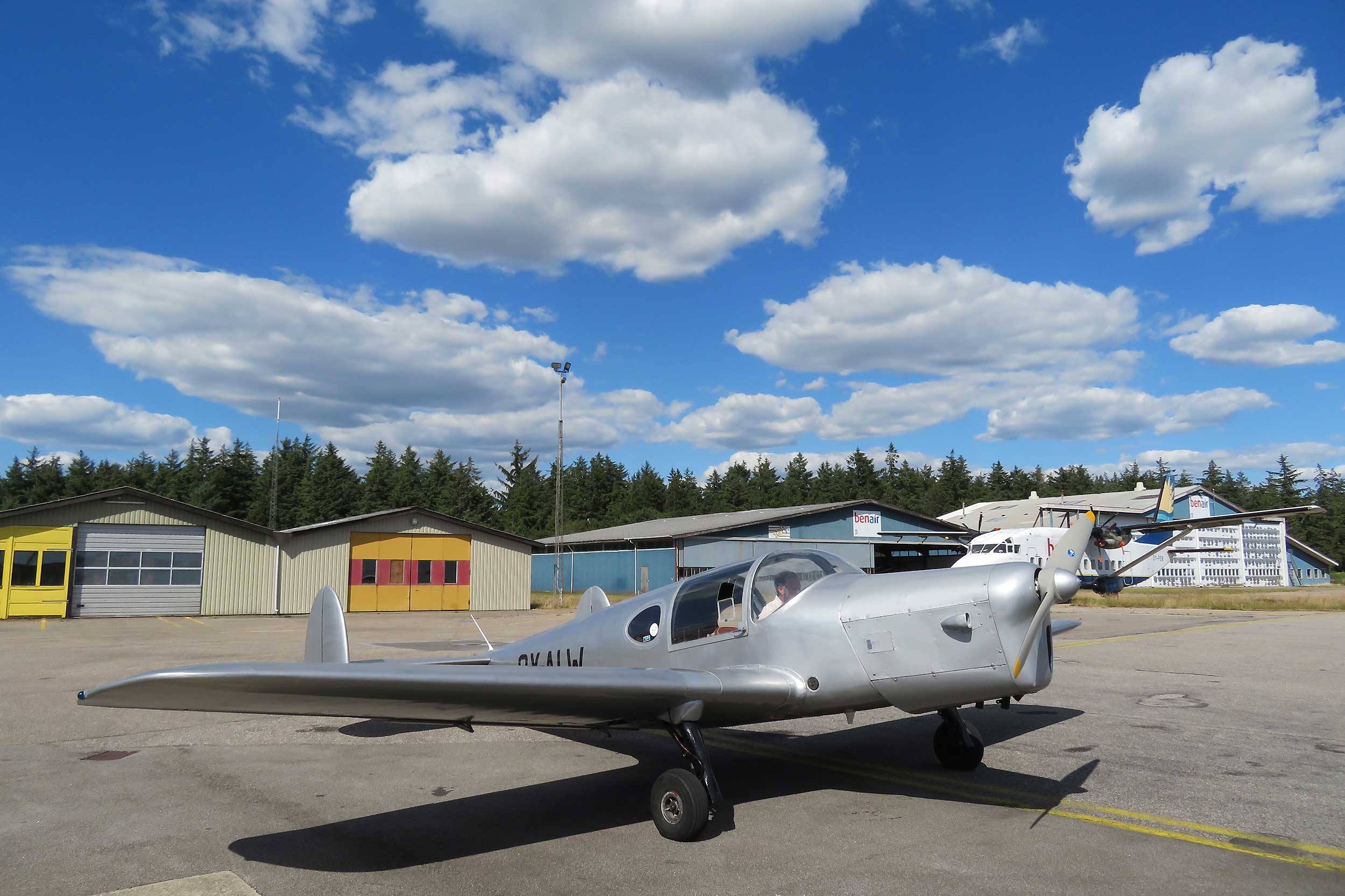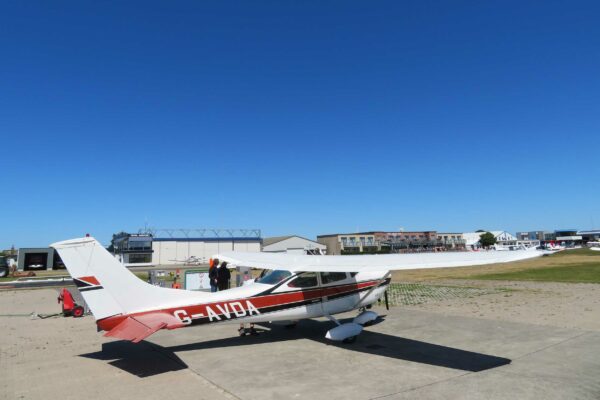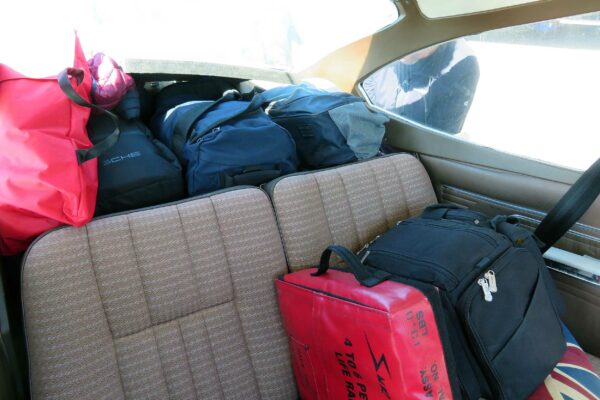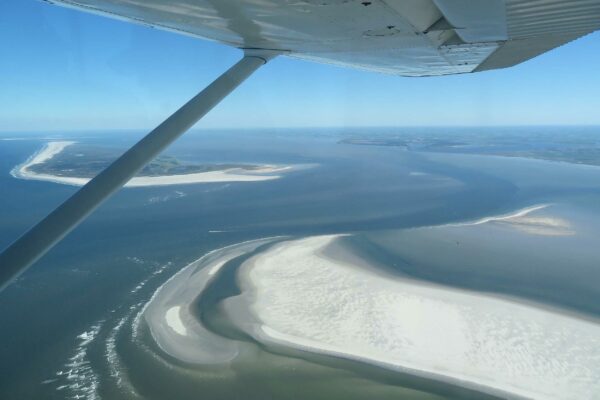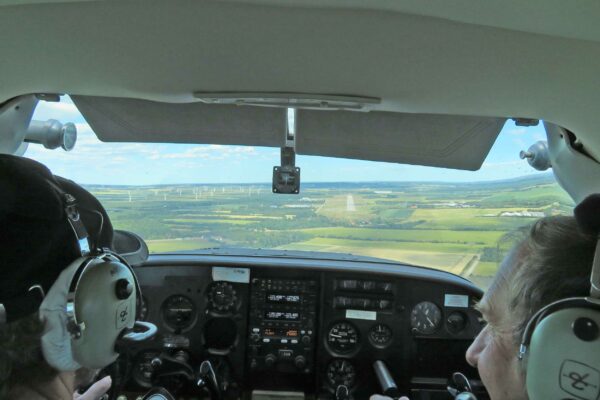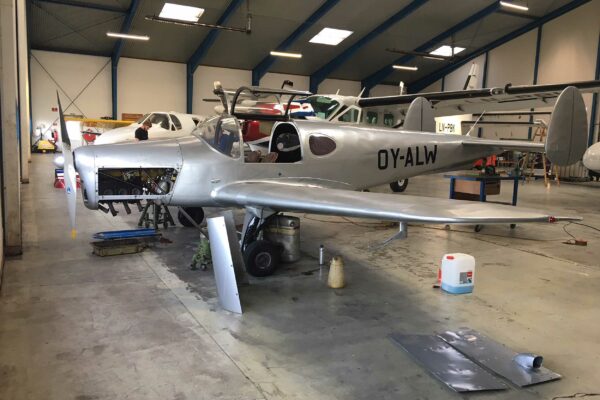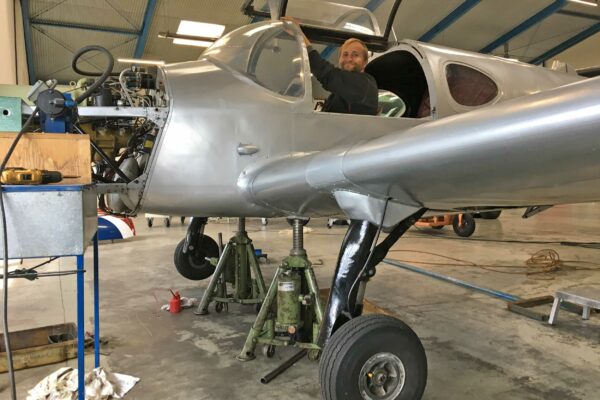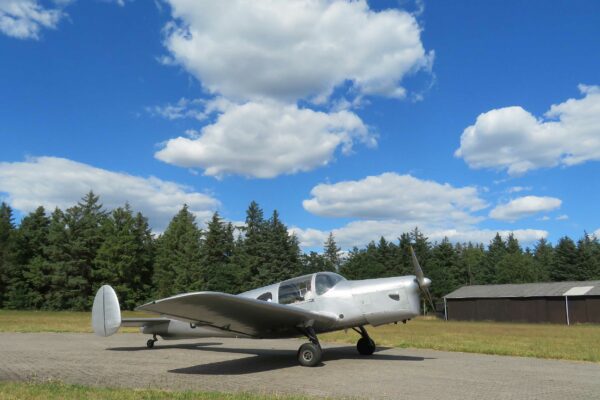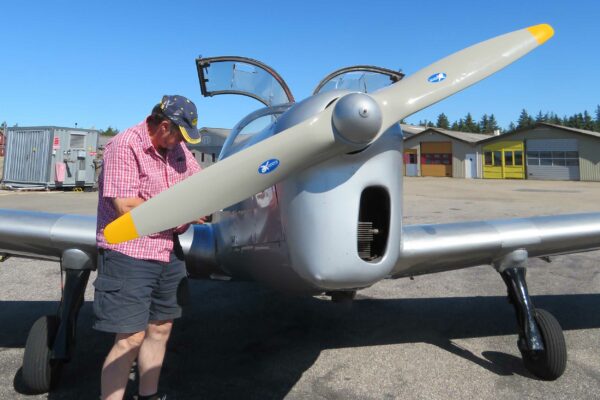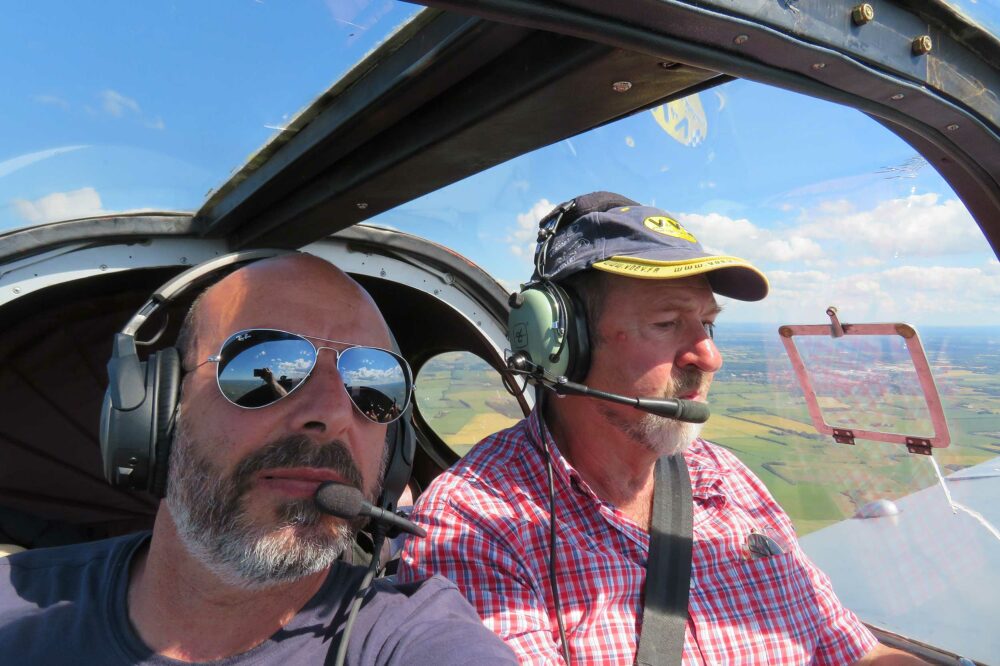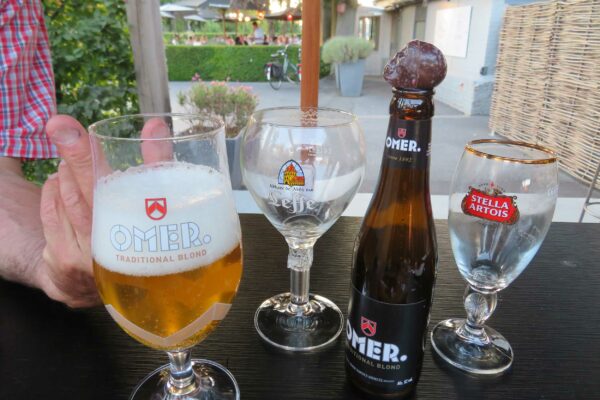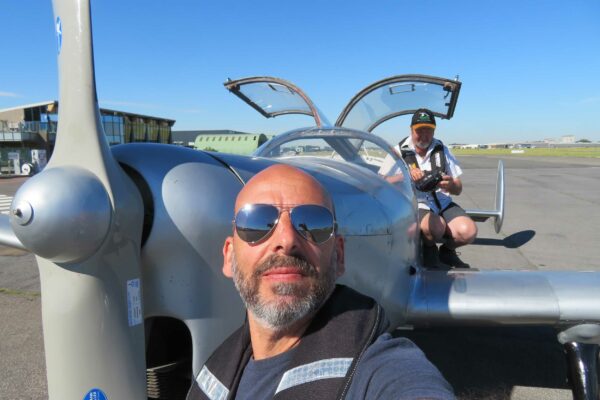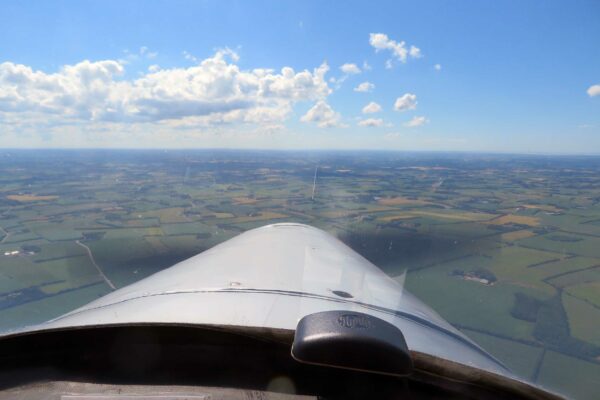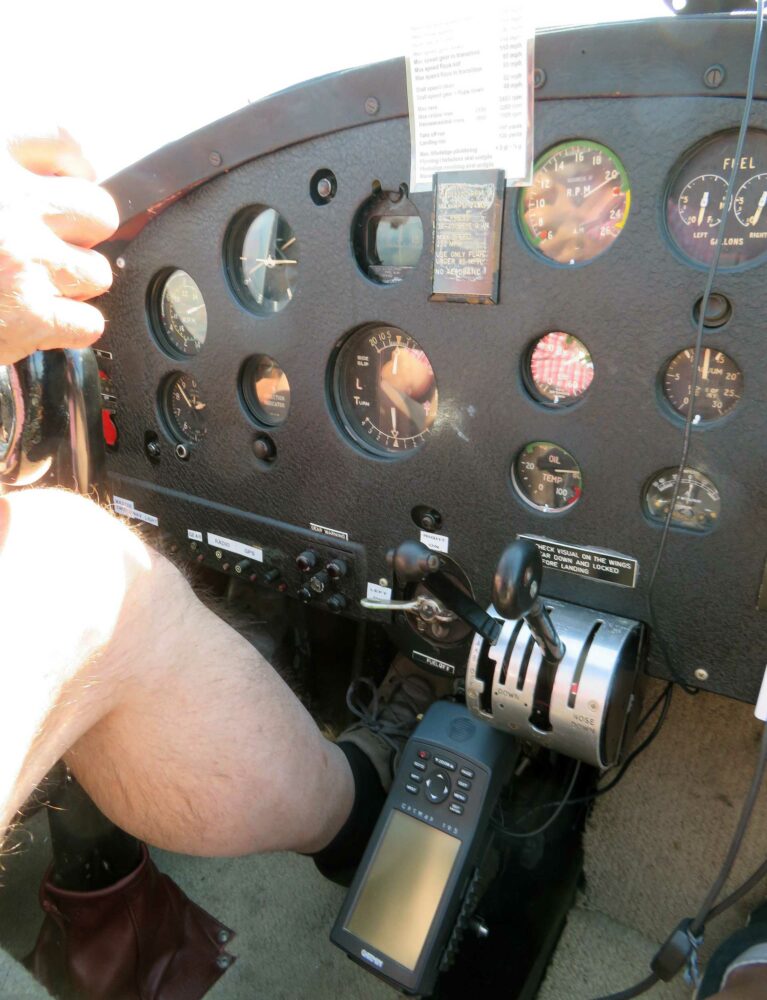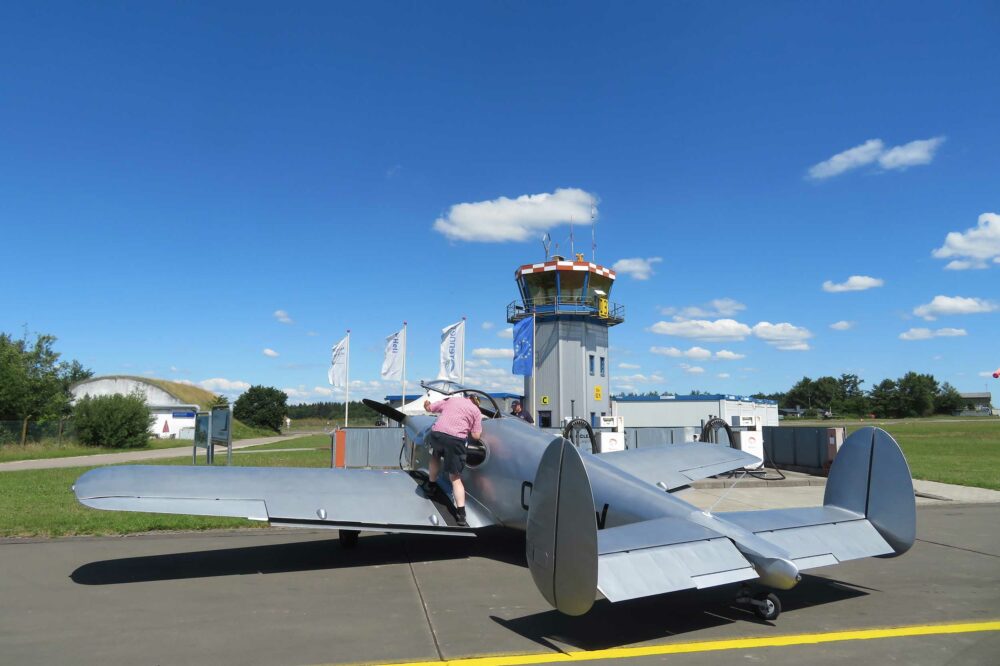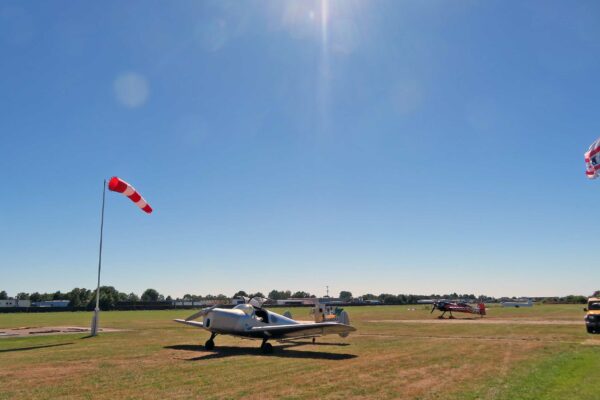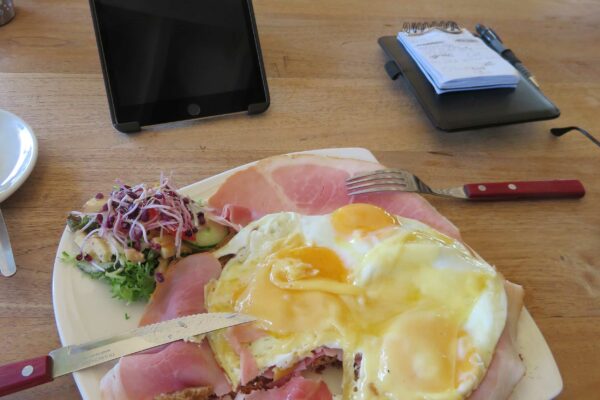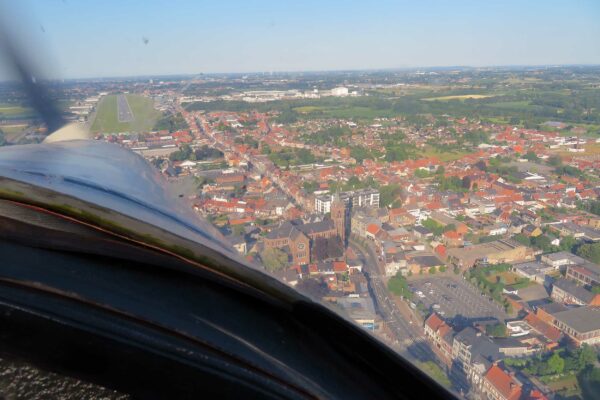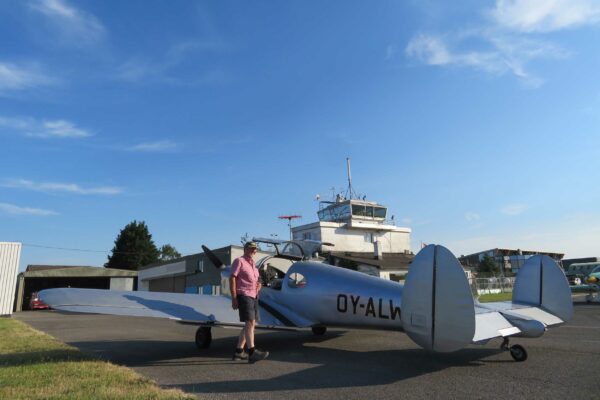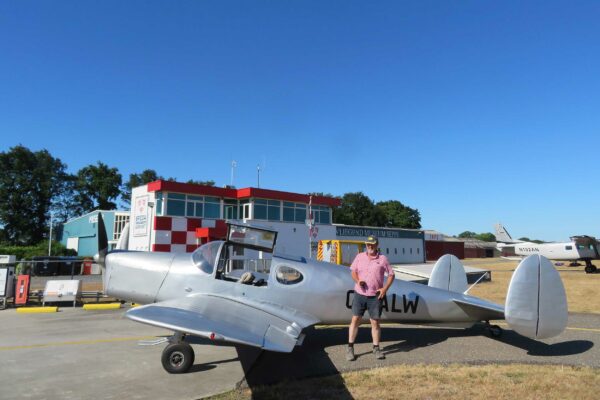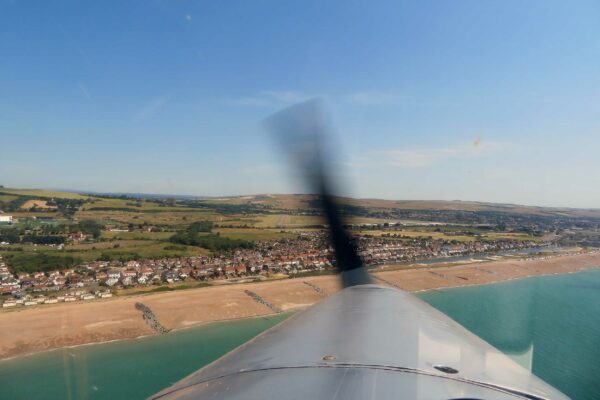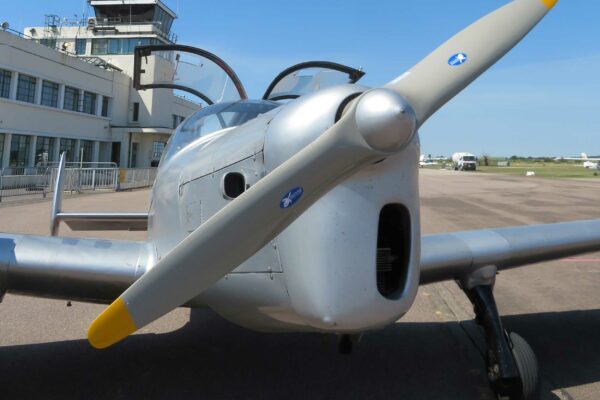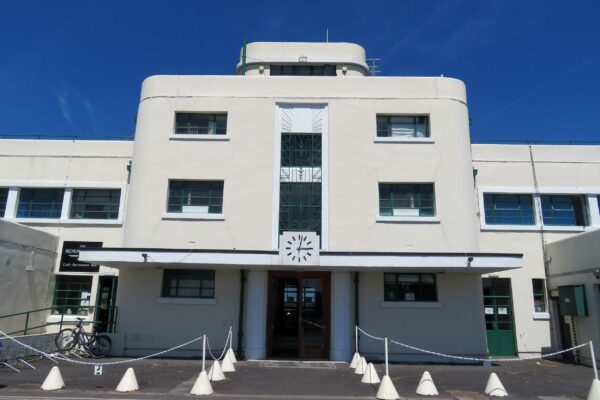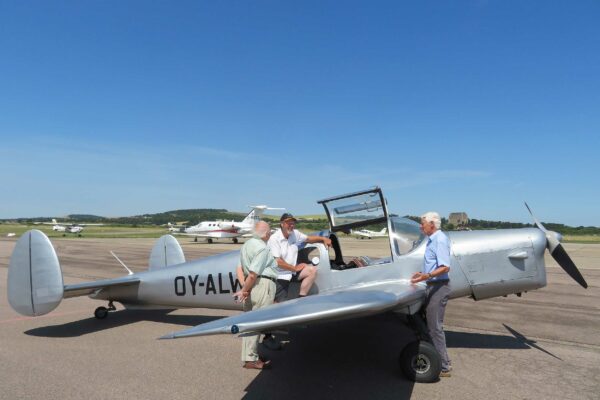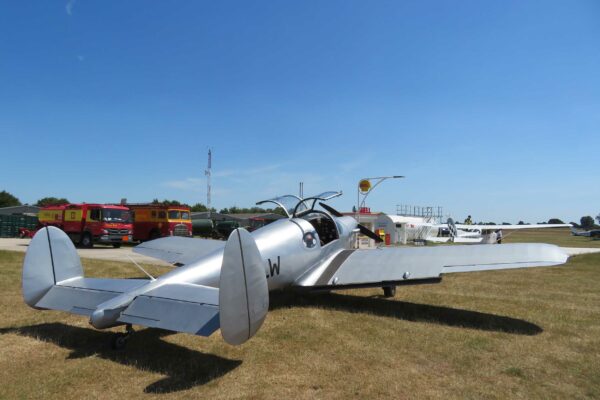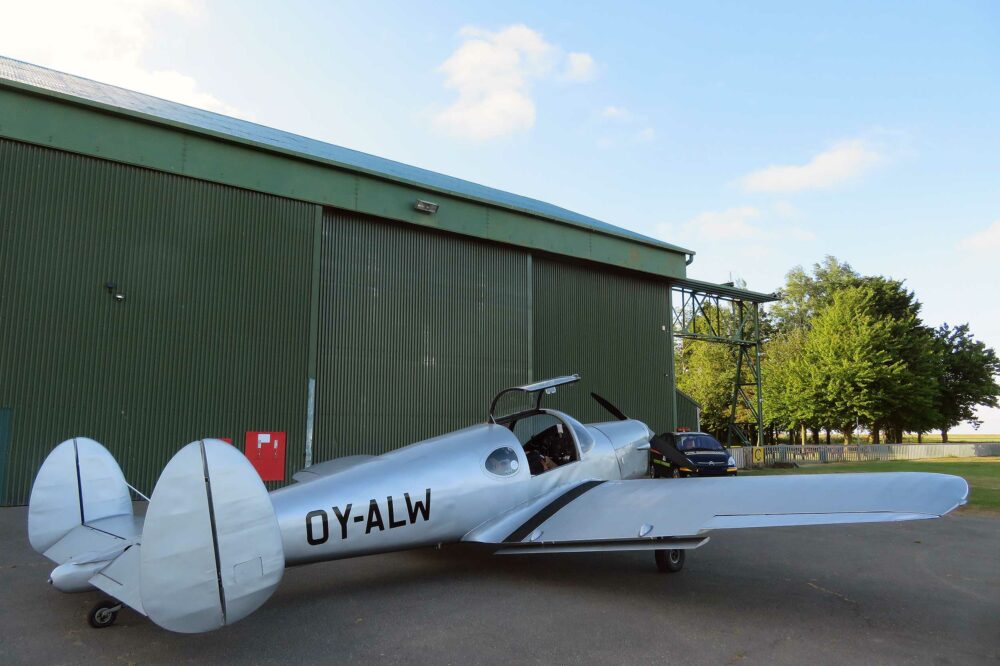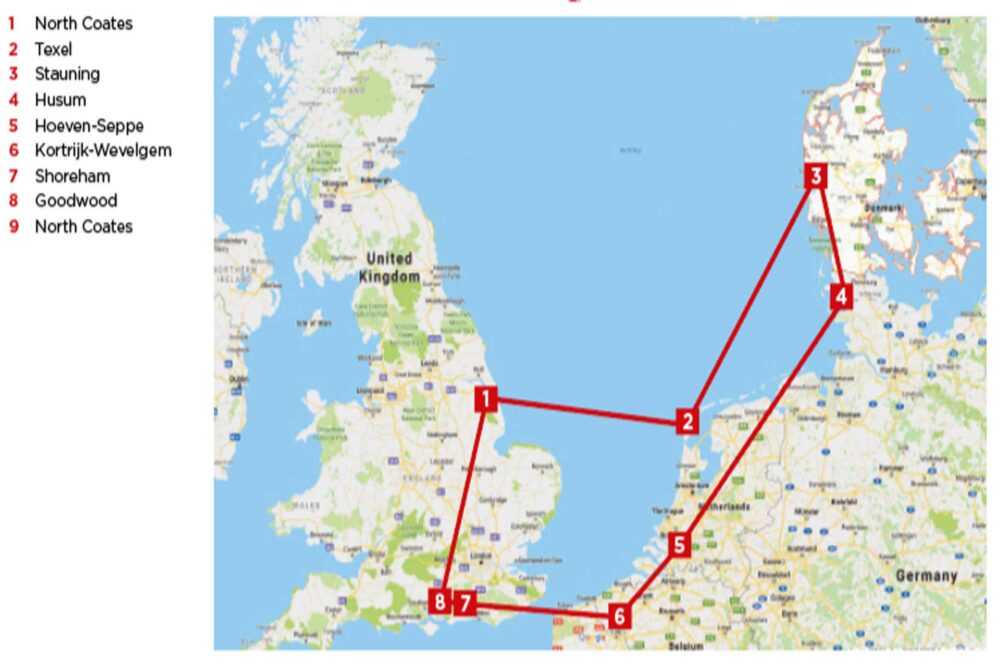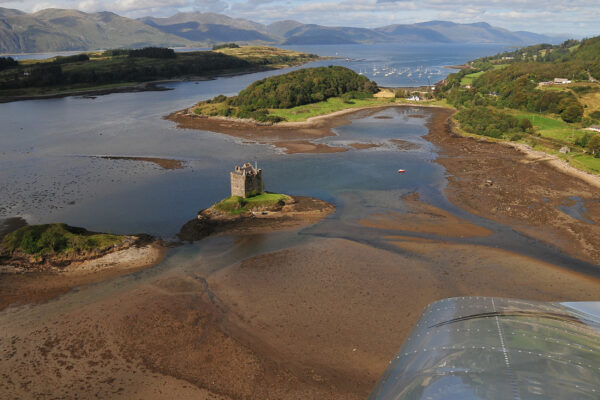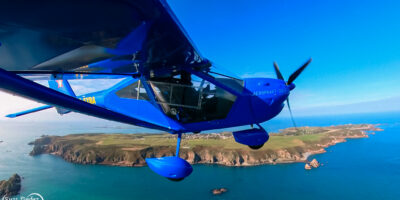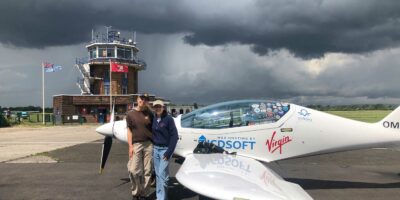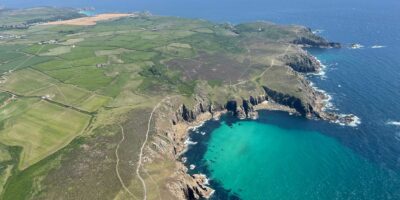Maybe it was all that grass at Woodley Aerodrome but it still seems extraordinary that FG Miles created so many wonderful things but made little attempt to give a Mercury pilot directional control on the ground. Just as well there was hardly any wind at Stauning.
The inline Cirrus sends more of a thrum through the airframe than I was expecting but acceleration is surprisingly brisk. Push the vintage airliner’s column forward to lift the tail as soon as possible in search of slipstream.
Feel the rudders come alive… then suddenly, it all feels normal, fluid and responsive even. Pneumatic gear whisks away in a couple of seconds, trim forward in search of a view over the nose and – breathe out. Hans had said that there was an interval ‘when you are not in control of anything…’. I suppose that’s one way to put it, but once you’re up there you can begin to savour the Mercury’s good points. In this case, as it turned out, only for a short time.
Without any warning, there was a large bang and a roaring rush of air swirled in a maelstrom round the cabin. Paperwork flew in a twisty spiral and spat out into the slipstream. “F***! The door’s come open…”
It was kind of obvious, but Stu sounded surprisingly calm. I have had this happen more than once so I was pretty confident that other than disturbed air rattling the controls a bit, it wouldn’t much affect the flying qualities. The more likely scenario is a stall and spin while attempting to close it.
This time though, there was a bit more concern about a door which was almost the length of the cabin and was large and heavy. If it came off and hit the tail, well, then, we might have a very big problem.
I pulled the power back and the nose up and got the flaps down. Remember to watch the airspeed… Always watch the airspeed…. “Can you reach it…” Stu is definitely not tall. “Undo the belts and stand up, I’ll forward slip.” “F*** off. I don’t want to die…” I could see his fingers stretching, stretching, sleeves fluttering in the thrashing air until at last, he caught the handle. He swung there for a moment but the door still refused to come down.
Surely there couldn’t be that much air pressure. “Don’t pull too hard… Don’t break it…” I was still mindful of what could happen but then it dawned. The catch that holds the door open had simply locked. Of course it had. “Push the door up, push it up…” I managed to reach behind and flick the stay upwards, Stu pulled at the door’s edge and clunk, the rush of air thrashing round the cabin subsided as quickly as it began. Everything seemed suddenly quiet. “Think we’d better get this thing down…”
A few moments investigation showed it was obvious that the door handle, which lays horizontally pointing backwards, needs only gentle downward pressure to unlatch a household tongue and slot.
The Messengers which were built later have a much more positive over-centre action, and the lever lies vertically against the door frame. There didn’t seem to be any damage though and the insurance for the trip home was a small block of wood gaffer-taped under each handle.
The weather looked to remain perfect for the next couple of days, the engine was running sweetly, the needles were in the right place and the lashed-up handheld had picked up Neil’s departure despite 8.33 channel spacing.
The rest we would have to manage as we went. By then, the blazing sun was dipping in the sky and it felt like quite enough aviation activity for a day. Anton was kind enough to drive us to the very pleasant Hotel Smedegaarden in the nearby town of Lem where we enjoyed a good meal and a few calming Tuborgs.
Denmark is fantastically neat and tidy, and the urban roads surfaced with a million red bricks seemed permanently empty, but the people that we did meet were
all friendly and helpful. I can recommend Denmark as a destination, too.


